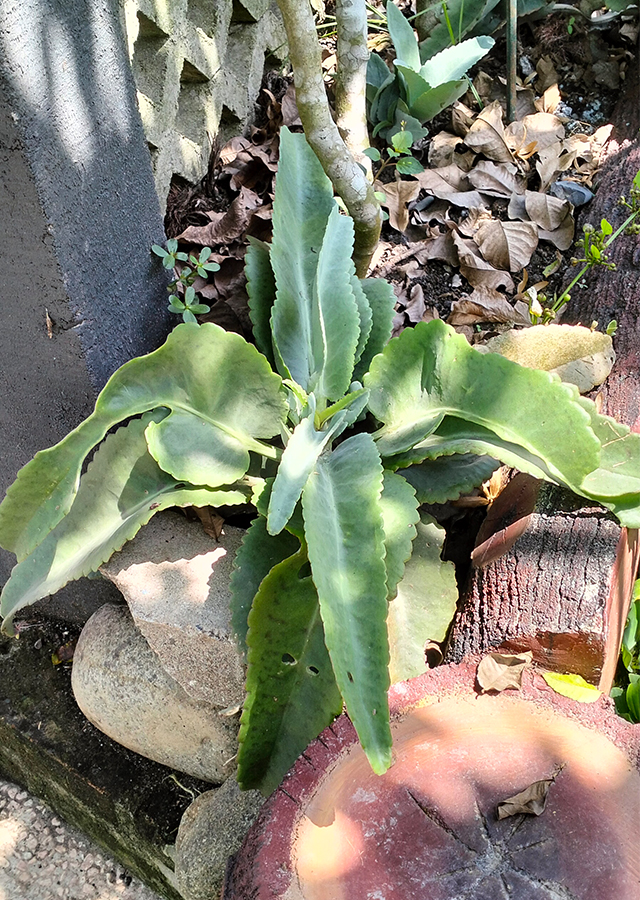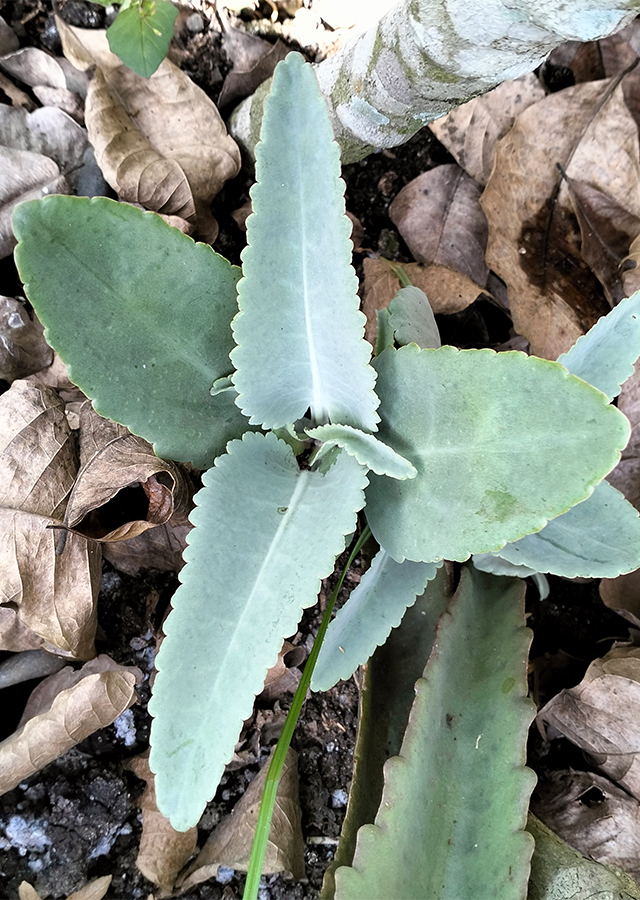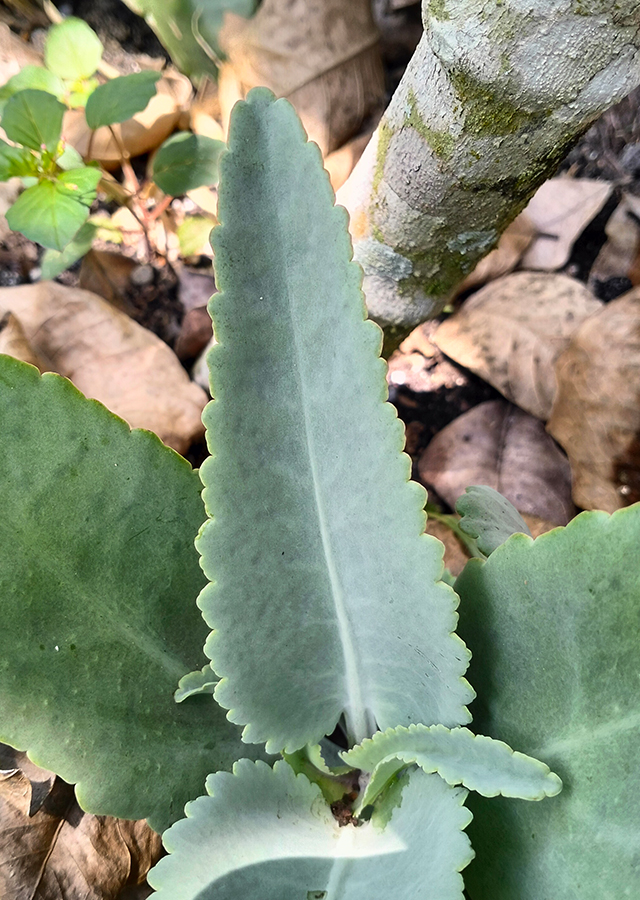Traditional Herbs from Kalanchoe gastonis-bonnieri
relieve_headache
- Prepare enough leaves of the donkey ear plant, wash them thoroughly.
- Soak them in enough water.
- Leave it for some time.
- Strain and drink.
burns
- Take enough fresh donkey ear plant leaves, wash them until clean.
- Crush them until they become a paste.
- Apply the leaf paste on the burn.
What is Kalanchoe gastonis-bonnieri Looks like??



Parts of Kalanchoe gastonis-bonnieri that could be used
- Leaf
Kalanchoe gastonis-bonnieri Distribution
Donkey Ears or Kalanchoe gastonis-bonnieri is a succulent plant native to Madagascar, and has now become naturalized in tropical regions of the Amazon, Africa, Asia, Australia and elsewhere in the tropics. This species has been used traditionally in several countries such as Africa, South America and Asia as an important ingredient in medicine, including for treating internal wounds and burns. However, caution is required in its use. Based on the results of laboratory studies, it shows that consuming Kalanchoe can be toxic in doses of more than 5 grams per kilogram per day. However, apart from being valuable as medicine, the uniqueness of the flowers and leaves means that this species is widely planted by people as an ornamental plant.Agroecology of Kalanchoe gastonis-bonnieri
Habitat Kalanchoe gastonis-bonnieri is found growing on calcareous rocks in tropical forests. This species is a relatively easy plant to grow, and can grow in both full sun and partial shade. This species also thrives in well-drained, nutritious porous soil. Kalanchoe gastonis-bonnieri is drought tolerant, but intolerant of extreme freezing. Flowers will only be produced by healthy plants that grow in optimal conditions.
Morphology of Kalanchoe gastonis-bonnieri
- Stems erect, usually branching only from the base, entire plant glabrous.
- Leaves unifoliate, rosette, thick and fleshy (up to 0.3-0.5 m long), grayish green with brown spots to Reddish brown, waxy. Young leaves are whitish to grayish, while mature leaves are egg-shaped to lanceolate (ovate to lanceolate) with toothed leaf edges, pointed leaf tips (acute), triangular leaf base (cuneate). Small plantlets often grow along the edge of the leaf. The leaves first grow upright, then bend and touch the ground with their tips.
- Flowers bisexual, tubular, drooping flowers are reddish to red. light-orange near the base with yellow, flared tips. Flowers are arranged in branching clusters (terminal inflorescence) and are borne on 0.6-0.9 m tall stalks The petals (crown strands) are yellowish green or reddish salmon with a wide tip and a yellow inside. The anther stalk is almost white with a yellow anther.
- Dehiscent, dried fruit is known as a follicle.
Cultivation of Kalanchoe gastonis-bonnieri
- Plant propagation through seeds and suckers.
- This species begins to flower at around 2-3 years of age. The mother plant dies after flowering once.
Kalanchoe gastonis-bonnieri, more details :
Chemical Content of Kalanchoe gastonis-bonnieriAlkaloids, terpenoids, saponins, flavonoids quercetin 3-O-α-rhamnopyranoside-7-O-β-D -glucopyranosyl-(1�'3)-α- L-rhamnopyranoside, 6-C-β-D-glucopyranosyl -8-C-β-D-glucopyranosylapigenin (vicenin-2).
Benefits of Kalanchoe gastonis-bonnieri
Treat genitourinary disorders (urinary tract infections), ovarian cysts, vaginal infections, uterine fibroids, vaginal contraception, relieve headaches and cold and flu symptoms, treat insect bites, bruises, burns, ulcers, internal injuries, rheumatism, inflammation, hypertension, diarrhea, tumors, abscesses, against leishmaniasis (a parasitic disease caused by the Leishmania parasite).
Simplisia of Kalanchoe gastonis-bonnieri
Another Facts for Kalanchoe gastonis-bonnieri :
Synonym of Kalanchoe gastonis-bonnieriBryophyllum gastonis-bonnieri (Raym,-Hamet &.Perrier) Lauz.-March., Kalanchoe adolphi-engleri Raym,-Hamet, Kalanchoe gastonis-bonnieri var. ankaizinensis Boiteau ex L.Allorge
Habitus of Kalanchoe gastonis-bonnieri
Succulents. Succulent plants, annual (perennial) or biennial (biennial), grow up to 0.5 m
Habitat of Kalanchoe gastonis-bonnieri
- Forest
- Rocky Area
- Land
No comments:
Post a Comment